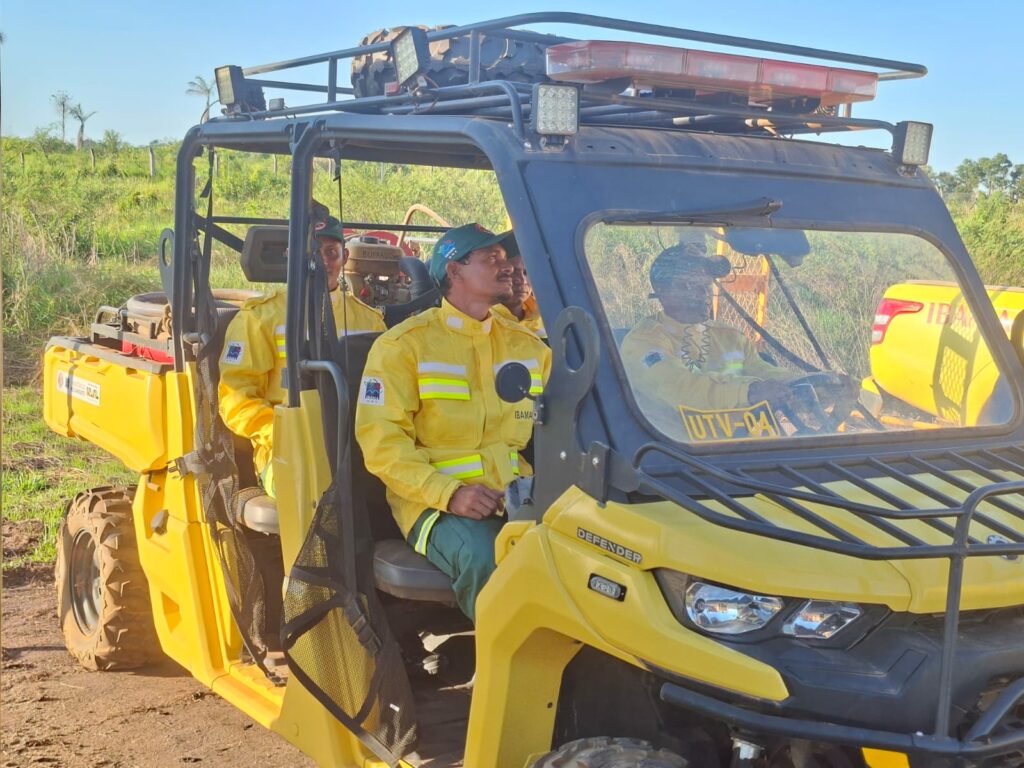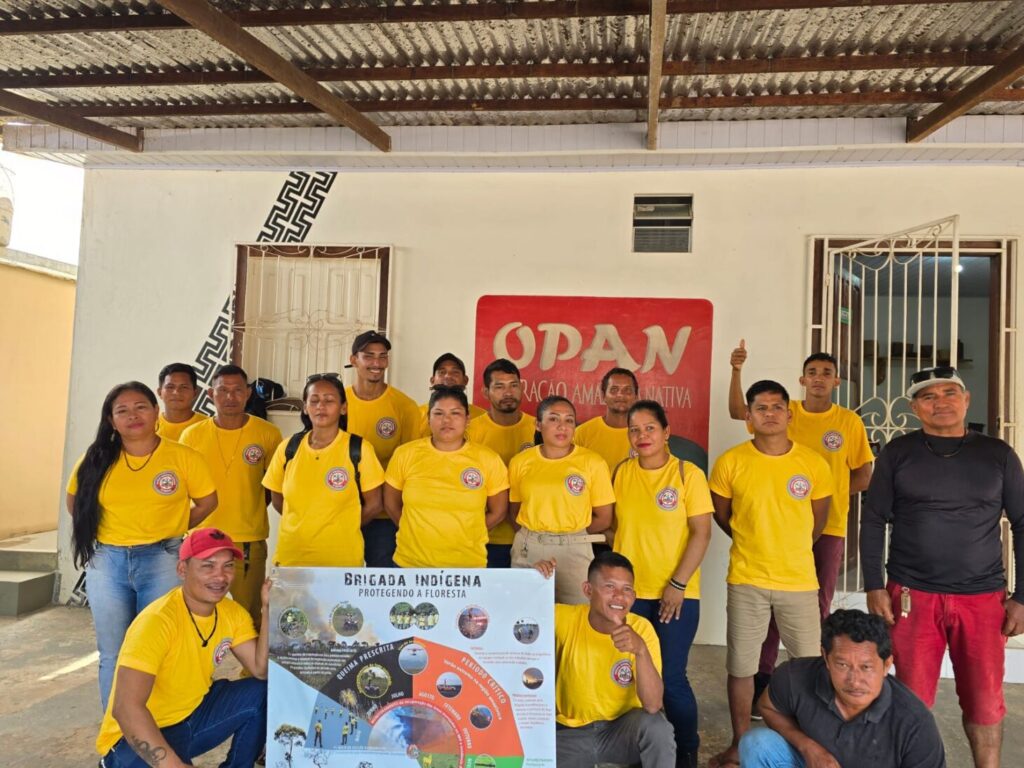A brigade of indigenous in the territory of the Apurinã (AM) achievement recognition
Firefighters from the Caititu Indigenous Land are hired by Ibama/Prevfogo and gain structure to continue protecting their territory
By Talita de Oliveira | OPAN
After working for three years on a voluntary basis, with the Indigenous Fire Brigade of the Caititu Indigenous Land, white-lipped and Collared of the people of the Apurinã, in the south of the Amazon river, and was officially hired by the Brazilian Institute of Environment and Renewable Natural Resources (Ibama) and the National Center for the Prevention and Fighting of Forest Fires (Prevfogo) in technical cooperation with the National Foundation for Indigenous Peoples (Funai).

With the deal, the squad starts with a design is most appropriate for the job, which includes personal Protective Equipment (Ppe), tools, vehicles, or pay for the firefighters. “Before signing the contract, we had the support of the partnerships that have helped us to make our volunteer work,” says Anthony Roberto, Apurinã, the chief of the general of the brigade.
With the start of the season, in the dry period, with a higher incidence of forest fires, and the group has already started the activities for the prevention, with a schedule of the visits to the villages in the IT white-lipped and Collared, and promoting awareness about the safe and effective use of controlled fire, in addition to the implementation of the seedling.
“Our work is now acknowledged as much in the city as well as in the Land of the indians. In all of the burning of the gardens of the communities in the fire to be out there with them, so that there will be a guard, so the fire did not spread. The role of the Brigade was a change to the communities,” says Anthony.
How the Indigenous Brigades work
It all starts with the consultation of the local communities, which to decide whether or not to implement a security. From there, the process of selection and training of the firefighters who go through technical training, with a focus on strategies for close-quarters combat, with the use of baffles and pump stations is found, and also the preventive measures, such as the burning of prescription.

After the training, the firefighters are hired for a period of up to six months, and start to get Personal protective equipment, tools, and logistical support for the work in the field. In addition to the combat of the fire, and they will also carry out environmental education activities in the villages, driving on the controlled use of fire and the risk of fire.
In some areas, implement, yet nursery and carried out the planting of seedlings of native species, thus contributing to the recovery of degraded areas. By combining traditional knowledge with modern techniques, all at Odds with the Indigenous strengthen the management of the territory, protect biodiversity, and to make the areas more resilient in the face of climate change.
History of the Indigenous Brigade of the Caititu Indigenous Land
In the process of the creation of the Indigenous Fire Brigade of the Caititu Indigenous Land, started in the year 2022, as part of a comprehensive protection of the territory, and of the plantations and Agroforestry Systems (Afs) implemented by the people of the Apurinã. At the time, Francis, President of the indigenous knowledge of the people of the Apurinã who have already had training in the area of the fire, and offered basic training in a small group. In the same year, the Apurinã is also made for the purchase of the necessary equipment to start the job.
Find out more: ‘Brigade of the Indian act to protect the territory of the fire’

In 2023, at a joint-led by the Association of Indigenous Producers of the Caititu Indigenous Land (APITC) and the Operation in the Amazon’s Native (OPAN), was commissioned by the Ibama/Prevfogo, the application of a course in advanced technical council, and the formalization of the brigade. The camp was finally implemented in 2024, from forming the 23 indigenous groups who have worked voluntarily in the course of the year in fighting the fires.
Currently, the Indigenous Fire Brigade of the Caititu Indigenous Land is comprised of 15 people, including 12 firefighters, the two captains of the squadron, and the chief of the general.
